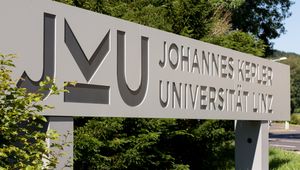JKU researcher Mahdi Saeedipour has been awarded one of the European Union's highly coveted ERC Starting Grants.

Shedding light into chaos: JKU researcher Mahdi Saeedipour has been awarded a highly coveted European Union ERC Starting Grant in the amount of €1.5 million to fund his ambitious endeavor to explore how droplets and bubbles move and interact in liquids.
Attaining a five-year ERC Starting Grant of this kind involves a highly competitive process. Priv. Doz. Dr. Mahdi Saeedipour (JKU Department of Particulate Flow Modelling at the Institute of Fluid Mechanics and Heat Transfer) remarked: “The Grant not only recognizes our work at the institute; above all, it is an opportunity to conduct in-depth research on a tremendously complex issue and considerably improve efficiency, like in steel production, for example.”
JKU Rector Stefan Koch congratulated the researcher and his department: “An ERC Starting Grant is a very special award. On the heels of JKU researchers Richard Küng and Gerd Bramerdorfer’s success, we are delighted that Mahdi Saeedipour is one of this year’s grant recipients. This is confirmation of outstanding research conducted at the JKU by motivated and driven researchers, proving themselves time and again in a competitive environment. On behalf of the entire university, congratulations!”
Streamlining Efficient Fluid Mechanics Processes
Droplets and bubbles are commonplace in technology, for example, when generating bubbles for the steel industry, combustion processes in automotive engines, and in medical aerosols. In each of these cases, the liquid is either atomized or aerosolized to create droplets of a certain size.
The problem is that atomizing liquids or breaking up bubbles requires energy. Saeedipour explains: “If you wanted to break a branch, for example, you would have to apply force to do so.” To minimize the amount of required energy, scientists need a good understanding of the turbulent liquid flow processes that result in the formation of droplets and bubbles.
Saeedipour adds: “In this regard, there is still room for improvement.” The so-called “Kolmogorov-Hinze theory” can predict behavior, but with some limitations. “When liquids - such as water and oil - are mixed during industrial processes, for example, the theory's validity is somewhat restricted.”
High Hopes to Make Industry More Efficient
These issues are among the reasons we need a new, universal theory for these processes. The funds provided by the ERC Starting Grant will give the junior researcher an opportunity to explore and conclusively describe how droplets interact in a strong and turbulent flows. “This will involve conducting experiments as well as computationally intensive computer simulations,” says Saeedipour.
When it comes to industrial processes, a successful outcome would result in a tremendous step forward. The researcher strongly believes: “A generally applicable theory regarding bubble and droplet fragmentation could contribute to attaining the desired sizes more efficiently which, in turn, would save energy and support sustainable industry practices.”
About Mahdi Saeedipour
Born in Iran, Mahdi Saeedipour earned a Master's degree in aerospace engineering at Sharif University of Technology in 2009. In 2017, he earned a doctorate degree at the JKU’s Department of Particulate Flow Modeling, and his postdoctoral degree in 2024. His research interests include interfacial flow modeling, multiphase turbulence, atomization and aerosols, microfluidic simulation, and computational fluid dynamics.
 Go to JKU Homepage
Go to JKU Homepage











